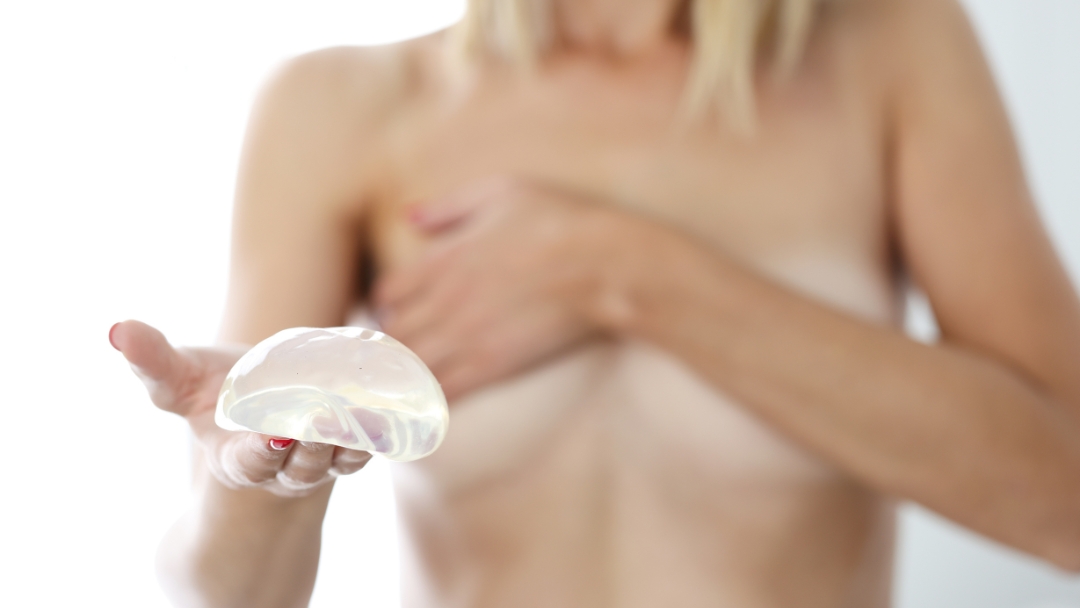Having a mastectomy (surgery to remove an entire breast to treat or prevent breast cancer) takes a significant emotional toll on many women. Although it is a very useful and necessary medical procedure in many cases, the aesthetic consequences can be important. Many women who undergo this surgery have the option of reconstructing the shape of the removed breast. This procedure is known as breast reconstruction surgery after mastectomy. In this note you will find all the information you need about it.
How is breast reconstruction surgery after mastectomy
Women who decide to rebuild their breasts have several options for doing so. Breasts can be reconstructed with implants (saline or silicone). They can also be reconstructed with autologous tissue (that is, tissue from another part of the body). Sometimes both implants and own tissue are used to reconstruct the breast.
Surgery to reconstruct the breasts can be done, or started, at the time of the mastectomy, called immediate reconstruction. Or it may be done after the mastectomy incisions have healed and breast cancer treatment is complete, called delayed reconstruction. Delayed reconstruction can be done months or even years after the mastectomy.
In a final stage of breast reconstruction surgery after mastectomy, a nipple and areola may be recreated on the reconstructed breast, if they were not preserved during the first intervention. Sometimes, breast reconstruction surgery includes intervention in the other breast, or the contralateral one, so that the two breasts match in size and shape.
Use of implants in breast reconstruction surgery after mastectomy
With this technique, implants are inserted under the skin or pectoral muscle after the mastectomy. Most surgeries are performed using a technique called skin-sparing mastectomy, in which much of the skin of the breast is saved for use in breast reconstruction. Implants are usually placed as part of a two-stage procedure. In the first phase, the surgeon places a device, called a tissue expander, under the skin that remains after the mastectomy or under the pectoral muscle. The expander is slowly filled with saline during regular doctor visits after surgery. In the second phase, once the chest tissue has relaxed and healed sufficiently, the expander is removed and replaced with an implant. The chest tissue is usually ready for implantation between 2 and 6 months after the mastectomy. In some cases, the implant can be placed in the breast during the same surgical procedure as the mastectomy, meaning a tissue expander is not used to prepare the implant.
Use of own tissue in breast reconstruction surgery after mastectomy
In autologous tissue reconstruction, a piece of tissue containing skin, fat, blood vessels, and sometimes muscle is taken from another part of the woman’s body and It is used to reconstruct the breast. This piece of tissue is called a flap. Different places on the body can provide flaps for breast reconstruction surgery after mastectomy. The flaps used for breast reconstruction usually come from the abdomen or back. However, they can also be taken from the thigh or buttocks.
Depending on their origin, flaps can be pedicled or free. With a pedicled flap, the tissue and attached blood vessels travel together through the body to the breast area. Since the blood supply to the tissue used for reconstruction is left intact, there is no need to reconnect the blood vessels once the tissue is moved. In the case of free flaps, the tissue is separated from its blood supply. It must be attached to new blood vessels in the breast area, using a technique called microsurgery. In this way, the reconstructed breast receives a blood supply.
In some cases, an implant and autologous tissue are used together. For example, autologous tissue can be used to cover an implant when there is not enough skin and muscle remaining after mastectomy to allow expansion and use of an implant.
Nipple and areola reconstruction
When the breast has healed from post-mastectomy breast reconstruction surgery and the position of the breast mound on the chest wall has had time to stabilize, the nipple and breast can be reconstructed. areola. Typically, the new nipple is created by cutting and moving small pieces of skin from the reconstructed breast to the nipple site and shaping them. A few months after nipple reconstruction, the areola can be recreated, usually with tattoo ink. However, in some cases, skin grafts can be taken from the groin or abdomen and attached to the breast to create an areola at the time of nipple reconstruction. A mastectomy that preserves the woman’s nipple and areola, called a nipple-sparing mastectomy, may be an option for some women, depending on the size and location of the breast cancer and the shape and size of the breasts.
What should be taken into account at the time of breast reconstruction?
One factor that can affect the timing of breast reconstruction is whether the woman will need radiation therapy. Radiation therapy can sometimes cause wound healing problems or infection in reconstructed breasts, so some women may prefer to delay reconstruction until after radiation therapy is complete. However, due to improvements in radiation and surgical techniques, immediate reconstruction with an implant is often still an option for women who will require radiation therapy. Breast reconstruction surgery after mastectomy with autologous tissue is usually reserved for after radiation therapy, so that radiation-damaged breast and chest wall tissue can be replaced with healthy tissue from another part of the body.
Another factor that can affect is the type of breast cancer. Women with inflammatory breast cancer often require more extensive excision of the skin. This can make immediate reconstruction more difficult, so it may be recommended that reconstruction be delayed until after adjuvant therapy is complete.
Even if a woman is a candidate for immediate post-mastectomy breast reconstruction surgery, she may choose delayed reconstruction. For example, some women prefer not to consider the type of reconstruction until they have recovered from the mastectomy and postoperatively. Doctor Anne-Sophie Lessard is an experienced surgeon who understands the needs of each woman, and can recommend the best option for each case. Do not hesitate to make an appointment to find out more.


Leave a Reply